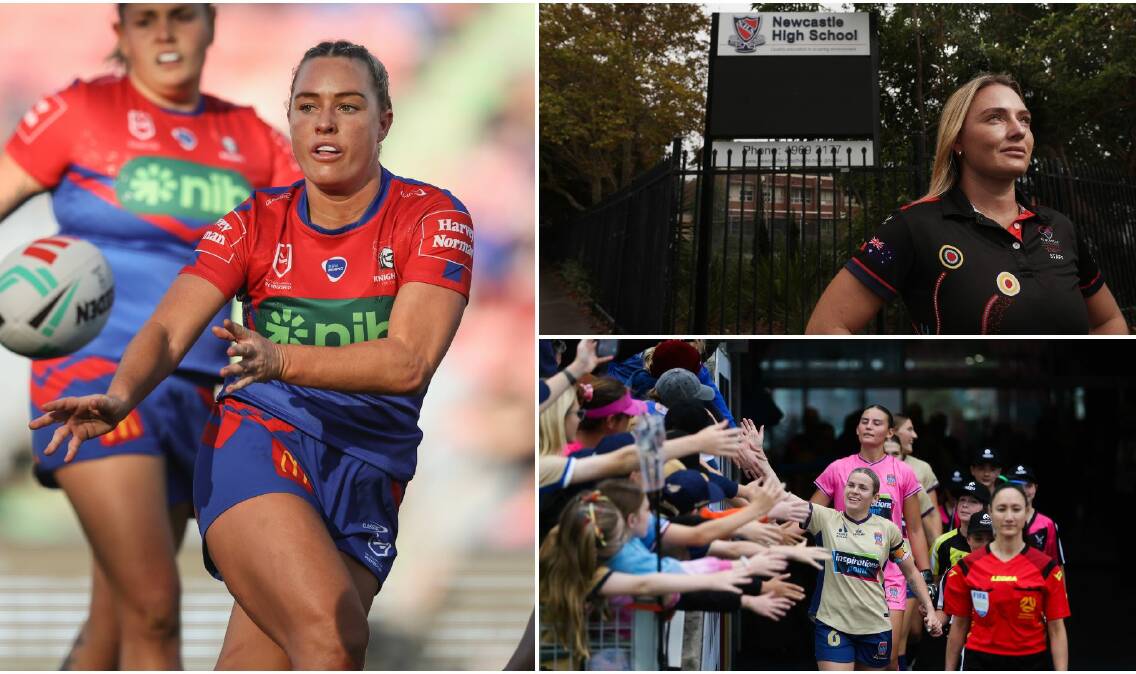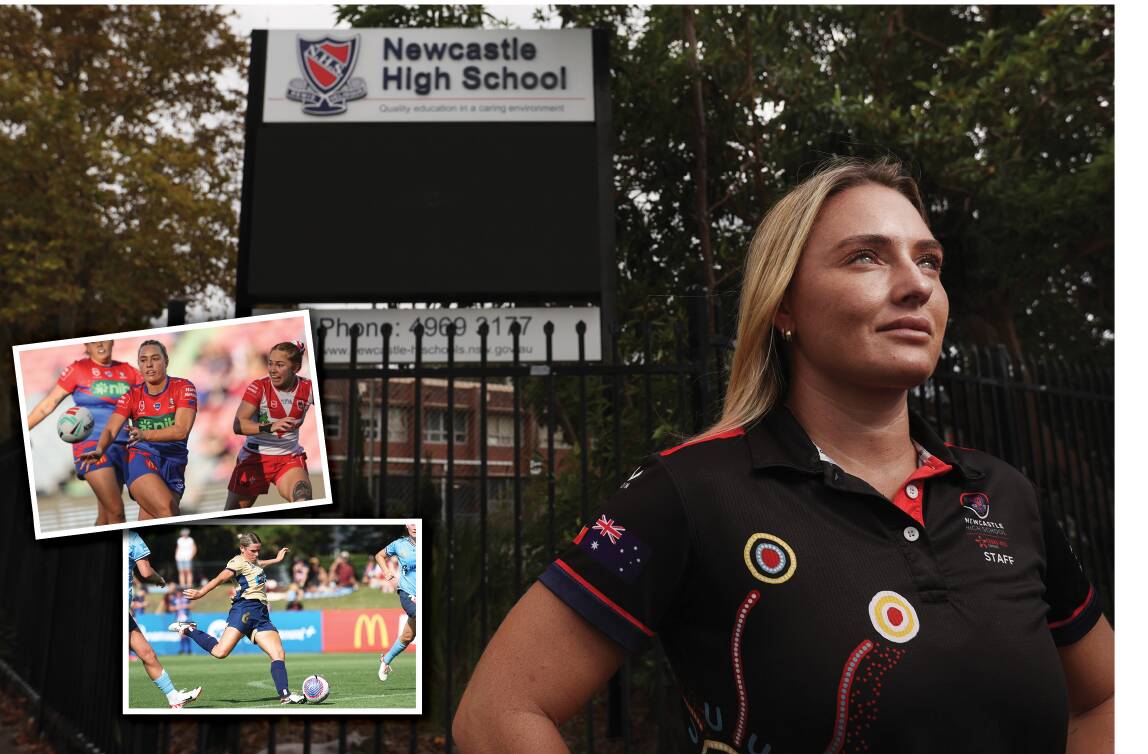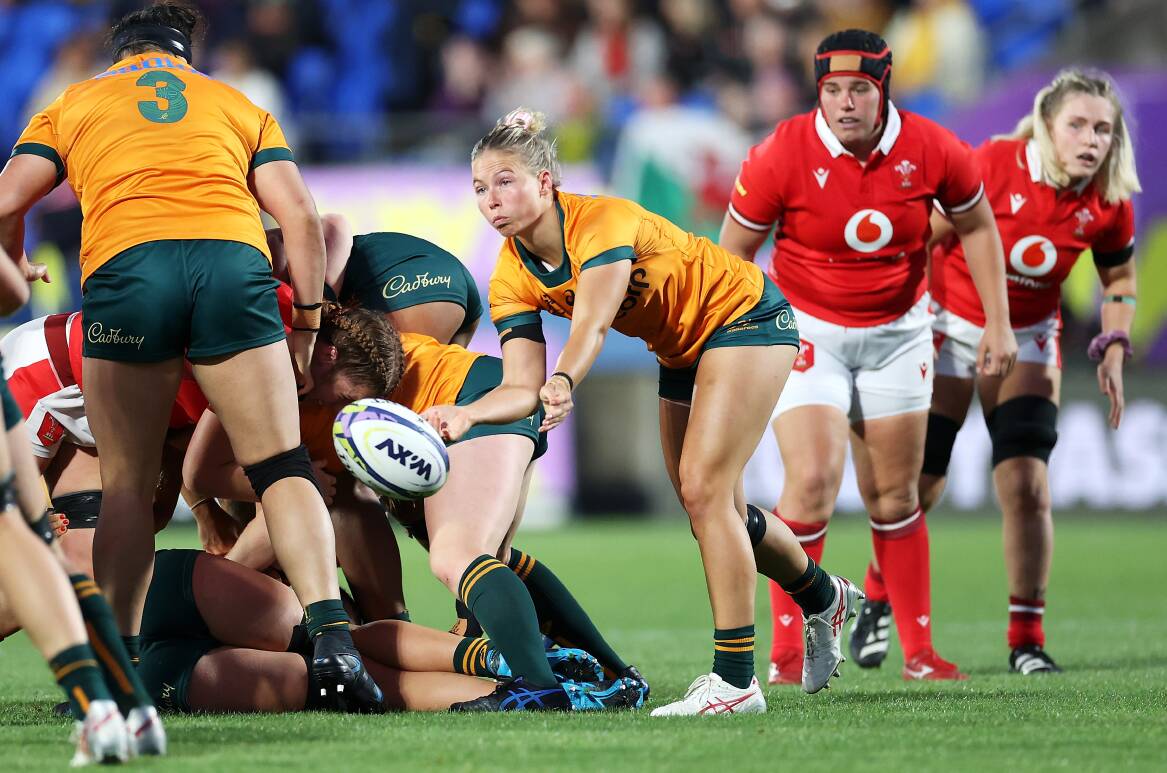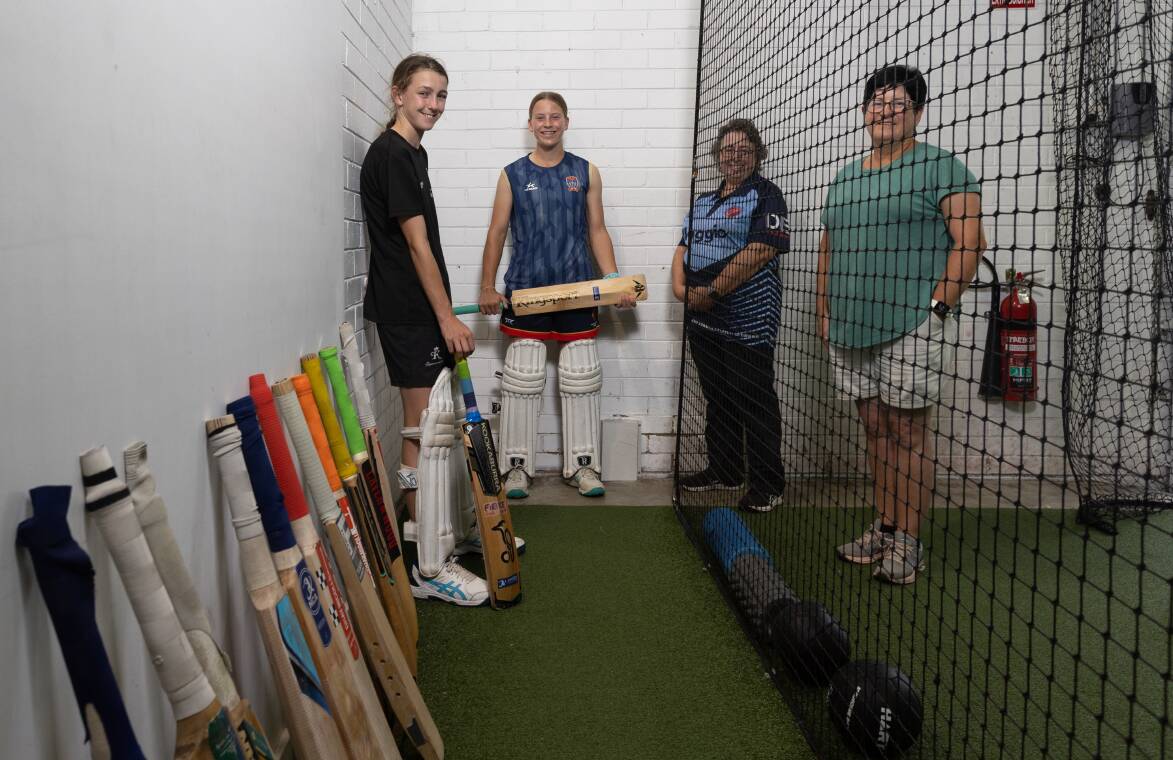
Olivia Higgins watched on enviously as the NRL launched their season in Las Vegas last weekend.
The Newcastle Knights hooker would love to also showcase the NRLW to the United States but the logistics around doing so are not that simple.
For starters, it would mean taking leave without pay from her other job as a PE teacher in the support unit at Newcastle High School.
It is the juggle, and struggle, many sportswomen face despite increased opportunities to pursue a range of codes at the elite level.

The minimum wage for an NRLW player has risen from $30,000 in 2023 to $34,000 this year for a 20-week season. It is set to rise each year until $50,600 in 2027.
By comparison, the NRL minimum wage for the 2024 season is $130,000 and will be $145,000 by 2027.
"It's ahead of other sports but it isn't enough to maintain the cost of living," Higgins said.
"People look at it and think it's a 10-week season, but it's not. It's a seven-week pre-season, and if you go through to the grand final it's a four to five-month campaign.
"If I decided to go part-time [at school], I'm giving up a job. I'm 31. Next year I'm contracted again but I still have a life after footy, and I don't want to jeopardise that.
"At the moment, it's just appreciating what we are doing now for the girls coming through. That's what I remind myself of. I feel really lucky to be playing at this age and still have the opportunities."
Higgins grew up in a rugby league household in Raymond Terrace, playing backyard footy with her siblings but didn't take up the sport until 2019.
"I'd go to all my brothers' games and I'd watch when dad coached the [Raymond Terrace] Magpies," Higgins said.
"I remember running the sand out to the boys. I just loved being around it, so I understood the game but there just wasn't any comp for me to play in at that age.
"I wasn't interested in playing with the boys like the other girls because I didn't want to start something that I had to stop."
Girls previously had to cease playing at 11 but now there are pathways being established from junior to senior club competition.
This year, the Knights have added an under-17 women's team to an under-19s side playing in the NSW Rugby League development competitions.
Higgins' journey, instead, started in ladies leaguetag with Souths before playing in NSW Women's Premiership tackle.
She debuted in NRLW with the Sydney Roosters before joining Newcastle in 2022 and now has the security of being locked into a two-year deal with a one-year option.
"They're doing such a good job here and in most clubs to get the girls going from a young age," Higgins said.
"I hope that they maintain that, keep the local girls here and one day it gets to the point where girls don't really have to work and can just go to training."
Day-to-day life during the NRLW season can be "quite full on" with at least three evening training sessions during the week at the Knights Centre of Excellence.
"The Knights are an amazing club and what they do for us girls," Higgins said.
"They are definitely the front-runners as far as trying to make it equal among the boys and girls. That was a big reason why I came to the club. We've got our own space and our facilities are exactly the same as the boys."
The Knights women will launch their quest for a third straight premiership with a Thursday night fixture against the Roosters on July 25, kicking off at 7.45pm.
"That just means we take leave without pay, which is what we have to do," Higgins said.
"That's not great but it's also worth it."
Newcastle Jets captain Cassidy Davis is playing her 11th season in the A-League while also working and studying.
The 29-year-old has experienced first-hand the gradual growth in the women's game from 12 rounds to a full home-and-away format across 22 rounds for the first time this year.
The long-overdue expansion has been welcome but also means an increased commitment.
The minimum wage for an A-League Women's player is $25,000 for a 35-week season. For an A-League Men's player aged 23 or older on a 12-month contract it is $63,750.
The Newcastle Herald understands the top NPL men's players in the Northern NSW competition can pocket a substantial amount more than an ALW player on a minimum wage.
To supplement her income as one of the country's best footballers, Davis works as a teacher's aide and a community liaison officer with the Jets.
"In the first two seasons I played, I earned $50 a game," Davis said.
"We are getting better money now, but I won't say that it's what we deserve. It's still far away because with two or three jobs, you end up getting taxed most of your wage anyway.
"And, if you're trying to get a loan, it's hard because you've only signed a one-season contract. There's also other expenses, such as the amount of boots I have to buy."
At 29, Davis may not see the game go full-time professional in her time but knows the hard work the players are putting in on and off the field today will benefit the next generation.
The days are long, sometimes starting at 5.30am if a morning gym session is scheduled and not finishing until after training at night.
"I dream of being able to wake up and go to training in the morning and be there for two or three hours, do extras, do recovery, get massage, to do all the things to make me a better player," Davis said.
"Now, you're rushing home from training because you're hungry and you've got to go and cook food and get ready for the next day, and that takes away from being able to recover properly or stay later and do the extras.
"It's a battle. But we're doing it for all of the girls coming through and for sport in general. Hopefully, we're going to look back at the women's Jets in five, 10 years and say, there's Emma Dundas, she's on $60,000 to $80,000 and all she does is play football."

Rugby Australia's increased investment in their women's players has allowed Wallaroos and NSW Waratahs halfback Layne Morgan to afford rent in Sydney after several years of commuting up to 20 hours each week from Newcastle to train and play.
The highest tier can earn up to $78,458 per year in Rugby Australia payments for Wallaroos and Super W, an increase from the maximum of $56,000 in 2023.
"It's definitely boosted up the women's game and given more girls freedom to focus on rugby more," Morgan said.
"Obviously, there's still a lot more steps to come but they're definitely moving in the right direction, and having that tiered system and the potential to earn up to those amounts has really assisted girls to be able to put more time and investment into their rugby."
The 25-year-old is juggling her Super W and Wallaroos commitments with finishing a teaching degree and working as a teacher.
"I don't think I ever thought when I was growing up that I would be a female who is semi-professional in a male-dominated sport," Morgan said.
"There was no Super W. There was no NRLW. It's exciting to know that young girl growing up is seeing what it is and knowing that there is that access and there will be that future."
You can't be what you can't see.
It is a widely used phrase these days and is not lost on Julie Wharton and Kim Bray, whose 14-year-old daughters have a choice of sports to play and pursue that they were never afforded.

Both, Caoimhe Bray and Felicity Wharton, are representative cricketers and soccer talents.
On Sunday, Caoimhe smashed 123 runs for Greater Hunter Coast to help secure a spot in the NSW Premier Cricket under-18 women's grand final before playing NPLW NSW first grade with the Jets Academy.
Until this year, Kim was clocking over 1000 kilometres each week driving from Denman to Newcastle and Sydney for Caoimhe's sporting commitments.
The family have now relocated to Adamstown because Caoimhe "has aways thought sport would be her job".
Julie, a geotechnical engineer who is also on various junior cricket committees and helping to grow the sport for girls and women in Newcastle, grew up with school the main avenue to play sport.
"The girls have all of these opportunities in front of them now," Julie said. "They can see the potential to be a professional athlete.
"They've got something to really aspire to be, and the can also see all of the parallel professions. They can see the women physiotherapists, the women coaches. It's about them having the options. They can choose to be whatever they want to be."







